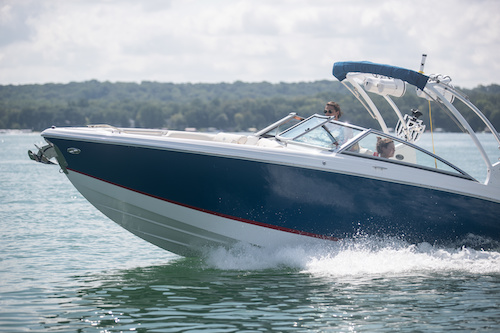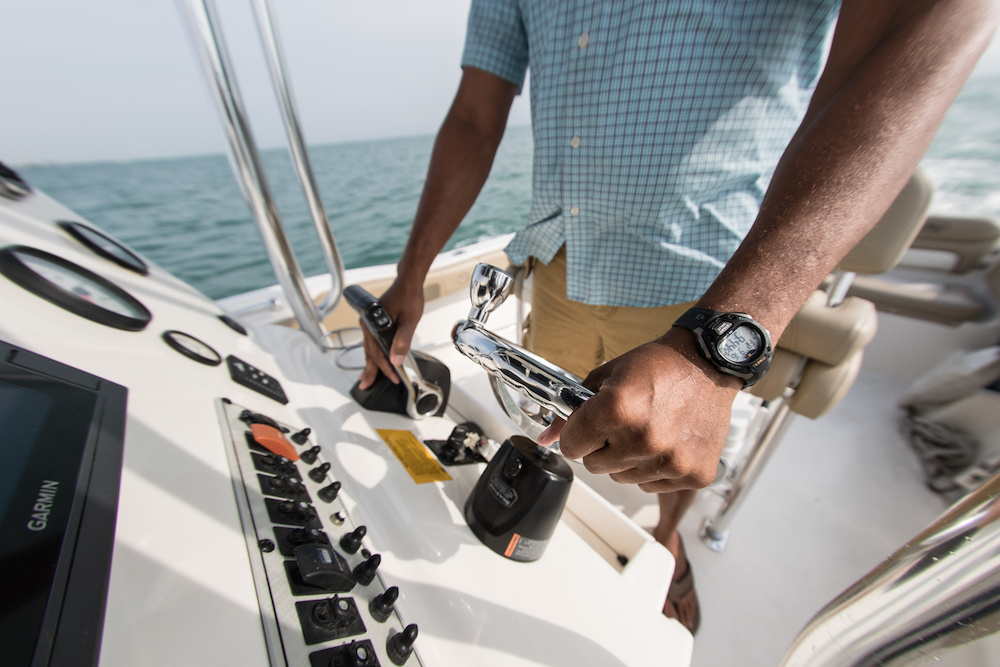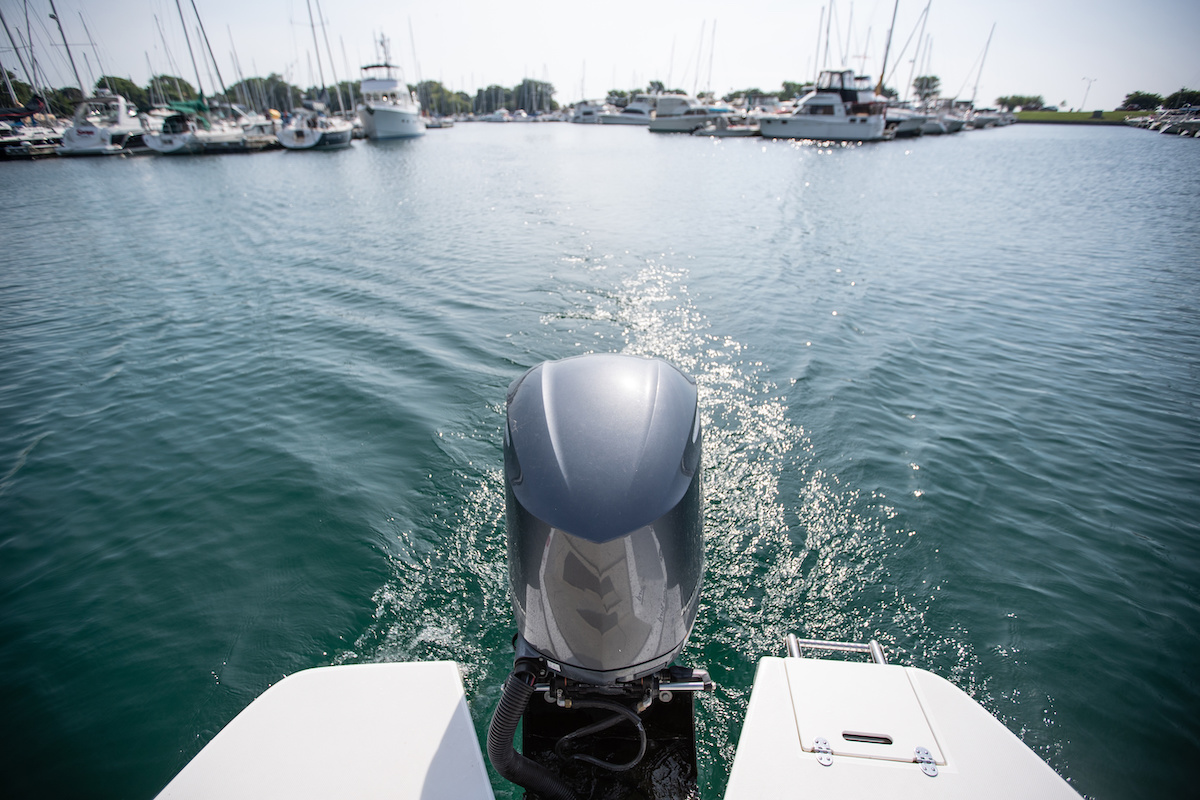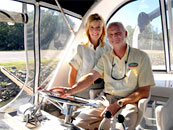Many new boaters ask, “what does ‘trim’ mean?”
Knowing what it means to trim a boat and how to trim it properly will improve its performance and fuel economy. Trim is simply the running angle of the boat as it makes way in the water; when we adjust the trim, we raise or lower the bow (the front of the boat).
This post will explain how to trim a boat in five simple steps.
5 Basic Steps to Trim a Boat
- Trim is controlled with a toggle button on the control lever or the dash.
- The trim system uses hydraulic rams to change the angle of the outboard motor or sterndrive gearcase and the propeller shaft angle relative to the boat transom through a range of about 20 degrees.
- When the boat is on plane, and the prop shaft is parallel to the water surface, the trim is said to be neutral or zero. In this state, all of the propeller force pushes the boat forward.
- When the trim button is pressed down, the gearcase moves closer to the transom until it bottoms out at about negative 6 degrees from zero trim. Now the prop shaft is aimed at 6 degrees, and some force is lifting the stern of the boat. When the stern is lifted, the bow is pushed down—just like a teeter-totter on a playground.
- When the trim button is pressed up, the gearcase rotates away from the transom, and once it’s past the neutral point, the propeller shaft is pointed downward. Now some of the prop thrust is pushing the stern down and thus lifting the bow.
Just remember that the boat’s bow will move in the same direction you press the trim button—button up is bow up, button down is bow down.
How to Adjust Your Boat's Trim
Negative trim—when the trim is all the way down—is used to help get the boat on plane as it accelerates away from dead in the water. The angle of the propeller thrust will help lift the stern and push the bow down so that the boat rolls smartly up onto the water.
Try to power on plane with the drive trimmed out, and the prop will dig a hole behind the boat, and the bow will point skyward, probably blocking your view forward, as the boat struggles to plane. You may get on plane eventually, but you are wasting fuel and putting undue stress on the engine.
Once on plane, it’s time to trim up to raise the bow so that the boat is skimming along over the water rather than pushing through it.
- Bump the trim button up, and you’ll notice the bow rise, the steering will feel lighter, and the boat speed will increase.
- Notice that the spot where spray breaks off the hull moves aft as you trim up.
- Drag is significantly reduced, and efficiency is enhanced.
Eventually, you may over-trim and raise the drive or outboard so far that the prop begins aerating and losing bite on the water—boat speed will decrease even as engine RPM increases. Bump the trim button down a little, and the prop will hook back up with the water.
Porpoising, or the bow bobbing up and down, is caused by over-trimming at cruising speed; there’s no longer enough hull in the water to support the boat’s weight. Either trim down a little until the porpoising stops or increase the boat speed slightly to create more lifting force under the hull. In rough water, especially with a head sea, trimming down will allow for a more comfortable ride and enable the sharper deadrise of the forward bow to slice through the chop.
An experienced captain gets in the habit of trimming the drive or outboard down every time the boat comes off plane, so it’s in position when it’s time to power back on plane. Automatic trim systems, a feature of many newer boats that can also often be added as an accessory, effectively manage the trim based on boat speed and throttle setting.
How to Operate Manual Trim
Boats powered by smaller outboards may not have a power trim system, but the trim can still be adjusted manually by moving a pin in the motor bracket.
- There will be a series of four or five holes in the bracket for this pin, which determines the running angle of the outboard (see your owner’s manual for adjustment details).
- You need to move the pin while the outboard is not running and the boat is stationary.
- The best trim setting will be a bit of a compromise; if you set the trim too low, the boat may plane easily, but the bow will plow when the boat is on plane, and if the trim is too high, the boat may struggle to get on plane.
- Try moving the pin up or down one hole at a time until the boat planes efficiently, the bow lifts a bit at speed, and the boat handles well.
- You may want to adjust the trim for boat weight, adding trim for a heavy load of passengers, for example, or trimming up one hole for a light load.
Read Next: Understanding a Boat's Propeller Pitch
Editor’s Note: This article was updated in November 2022.



